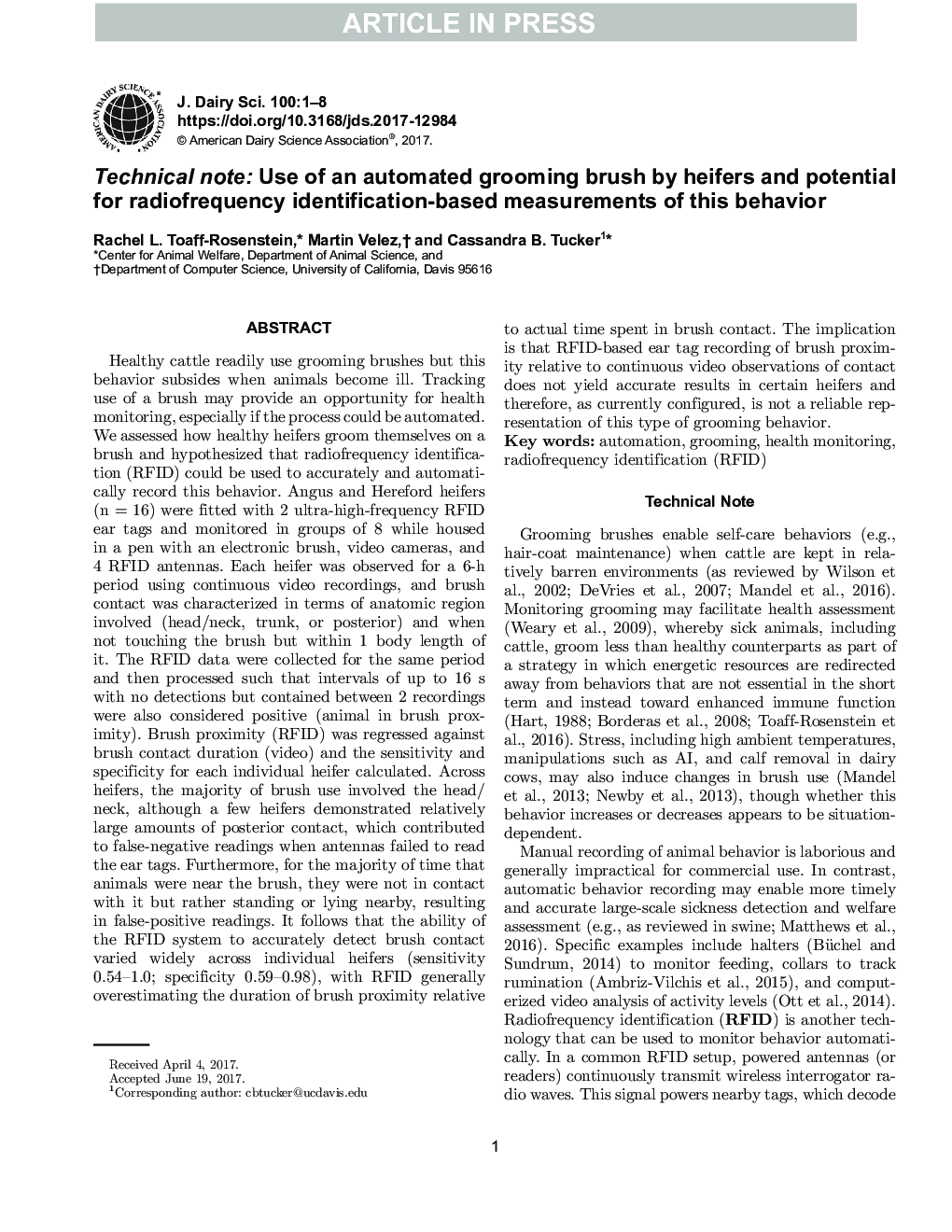| کد مقاله | کد نشریه | سال انتشار | مقاله انگلیسی | نسخه تمام متن |
|---|---|---|---|---|
| 5542029 | 1402513 | 2017 | 8 صفحه PDF | دانلود رایگان |
عنوان انگلیسی مقاله ISI
Technical note: Use of an automated grooming brush by heifers and potential for radiofrequency identification-based measurements of this behavior
ترجمه فارسی عنوان
نکته فنی: استفاده از یک براش مراقبت خودکار توسط تلیسه ها و امکان سنجی های مبتنی بر شناسایی رادیوفرکانس در این رفتار
دانلود مقاله + سفارش ترجمه
دانلود مقاله ISI انگلیسی
رایگان برای ایرانیان
موضوعات مرتبط
علوم زیستی و بیوفناوری
علوم کشاورزی و بیولوژیک
علوم دامی و جانورشناسی
چکیده انگلیسی
Healthy cattle readily use grooming brushes but this behavior subsides when animals become ill. Tracking use of a brush may provide an opportunity for health monitoring, especially if the process could be automated. We assessed how healthy heifers groom themselves on a brush and hypothesized that radiofrequency identification (RFID) could be used to accurately and automatically record this behavior. Angus and Hereford heifers (n = 16) were fitted with 2 ultra-high-frequency RFID ear tags and monitored in groups of 8 while housed in a pen with an electronic brush, video cameras, and 4 RFID antennas. Each heifer was observed for a 6-h period using continuous video recordings, and brush contact was characterized in terms of anatomic region involved (head/neck, trunk, or posterior) and when not touching the brush but within 1 body length of it. The RFID data were collected for the same period and then processed such that intervals of up to 16 s with no detections but contained between 2 recordings were also considered positive (animal in brush proximity). Brush proximity (RFID) was regressed against brush contact duration (video) and the sensitivity and specificity for each individual heifer calculated. Across heifers, the majority of brush use involved the head/neck, although a few heifers demonstrated relatively large amounts of posterior contact, which contributed to false-negative readings when antennas failed to read the ear tags. Furthermore, for the majority of time that animals were near the brush, they were not in contact with it but rather standing or lying nearby, resulting in false-positive readings. It follows that the ability of the RFID system to accurately detect brush contact varied widely across individual heifers (sensitivity 0.54-1.0; specificity 0.59-0.98), with RFID generally overestimating the duration of brush proximity relative to actual time spent in brush contact. The implication is that RFID-based ear tag recording of brush proximity relative to continuous video observations of contact does not yield accurate results in certain heifers and therefore, as currently configured, is not a reliable representation of this type of grooming behavior.
ناشر
Database: Elsevier - ScienceDirect (ساینس دایرکت)
Journal: Journal of Dairy Science - Volume 100, Issue 10, October 2017, Pages 8430-8437
Journal: Journal of Dairy Science - Volume 100, Issue 10, October 2017, Pages 8430-8437
نویسندگان
Rachel L. Toaff-Rosenstein, Martin Velez, Cassandra B. Tucker,
